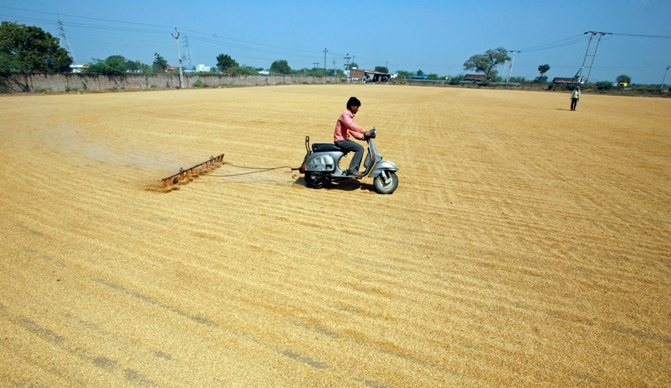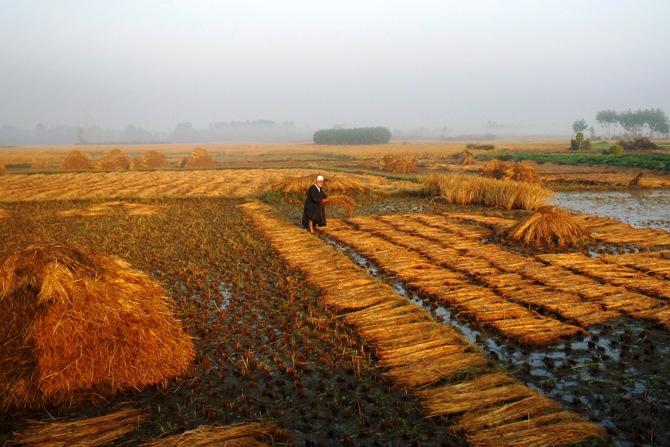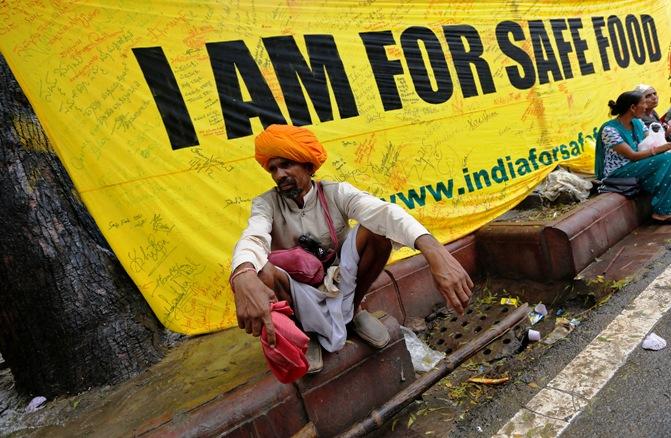
Bt brinjal in Bangladesh calls for a policy review by India.
With Bangladesh approving commercial farming of Bt brinjal -- a genetically modified crop developed using technology that evolved originally in India -- the moratorium put on tests of a similar gene-altered version of this vegetable by New Delhi is likely to give rise to fresh complications.
Given the highly porous border between the two countries, ingress of GM brinjal seeds into India would be hard to avert.
It is, thus, past time for India to revisit the question of cultivating Bt brinjal hybrids that have been field-tested in the country.
. . .

The four varieties of Bt brinjal developed by the Bangladesh Agricultural Research Institute and approved by that country’s biotechnology regulator carry the same insect killer gene, Cry1Ac, taken from the soil bacterium Bacillus thuringiensis, that has been injected into the Indian brinjal hybrids put on hold.
This gene construct was sourced by the BARI from India’s Maharashtra Hybrid Seeds Company, in which the multinational life sciences company Monsanto, also the patent holder of this gene, has a sizable stake.
In 2009, the then environment minister, Jairam Ramesh, imposed an indefinite moratorium on Bt brinjal, disregarding the sanction given to it by the Genetic Engineering Approval Committee and endorsed by six premier Indian science academies.
. . .

That moratorium was extended to field trials of virtually all genetically engineered crops developed in the private or public sectors, thereby thwarting the release of several GM seeds that are in the pipeline or are at various stages of development.
Essentially, India has shut the door on applications of biotechnology -- which could help crops to withstand pests, diseases, drought and climate change.
Unsurprisingly, farm production is not keeping pace with rising demand; the supply crunch has driven up prices.
The suffering of India’s consumers is a direct consequence of an unwillingness to review and apply rational, progressive policy to India’s fields.
. . .

Private industry is not the only one pushing for biotech crops; publicly funded farm research centres are equally keen.
In fact, they have a far wider range of crops as well as gene constructs ready for field trials and risk evaluation.
However, while the private industry has the option to shift its GM development facilities to other countries, the public sector is constrained to do so.
Thus, what the anti-GM lobby may actually achieve by pressing for perpetuation of the ban on testing GM crops is to foreclose the scope for competition between biotech seeds of the private and public sectors, thereby hurting farmers and consumers.
. . .

India has been a late starter in biotechnology, although the country needs it more than most; the unhelpful policies of the current government will have pushed it further back.
Naturally, the risk analysis procedures should be as careful as possible.
Fortunately, the well-designed Biotechnology Regulatory Authority of India Bill contains many such provisions.
It is yet to come up for discussion in Parliament; there is still time to modify it to incorporate any further suggestions for safeguards that are necessary and recommended by those sceptical of GM crops.
But once these issues are sorted out -- which should be done without delay -- there should be no room for any delaying or preventive tactics by those who wish to turn their back on technology in agriculture.